Pasargadae, Tomb of Cyrus
Q2635530Pasargadae: one of the oldest residences of the Achaemenid kings, founded by Cyrus the Great (r.559-530). It resembled a park of 2x3 km in which several monumental buildings were to be seen.
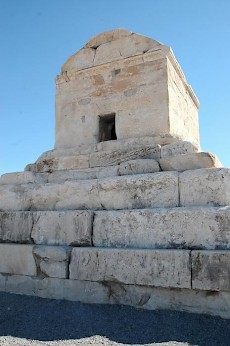
Pasargadae's most famous monument is the tomb of Cyrus the Great. The great king was buried here in after his death in the summer of 530. According to literary sources, more than two centuries later, Alexander the Great ordered the tomb to be restored (text). Archaeologists have found no traces of repairs, however.
The monument as a whole measures about 13¾ x 12¼ meters and is about eleven meters high. The lower part is platform, about five meters high, which vaguely reminds one of a ziggurat from Mesopotamia. Other scholars see parallels with the monuments in Urartu, which Cyrus had conquered in 547, and point at a similar tomb at Çavustepe. It is also possible that the architect was inspired by structures from Lycia and Phrygia, which the Persians had conquered after 547, when Cyrus defeated king Croesus of Lydia.
The upper part consists of two chambers: one is the real tomb, a square room, and the other is an attic. The function of this second room is unknown. Hardly visible is a rayed disk, some 50 cm in diameter, on the gable above the door. The significance is unknown.
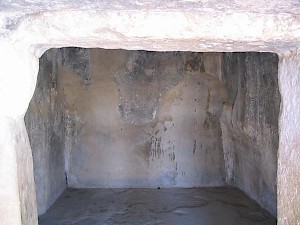
The tomb chamber itself is two meters wide, two meters high, and three meters deep. It once contained a gold sarcophagus, Cyrus' arms, his jewelry, and a cloak. This garment played an important role in the Persian inauguration rituals.note That the robe of a former king conveyed legitimacy, is also known from Hellenistic Babylonia.
Since the thirteenth century, the tomb was surrounded by a square portico, which converted it into a mosque, which was called the Qabr-e Madar-e Solaiman, or "mosque of the mother of Solomon". The stones of this portico had been taken from Palace P. This building had already collapsed when archaeological investigations started, and many stones had already been reused in a caravanserai close to the tomb.
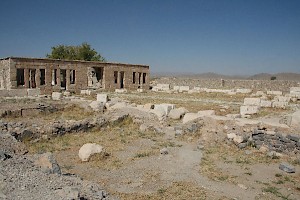
What remained of the portico was removed - brought back to Palace P, to be precise - to create a helicopter landing pad for the festivities organized by Mohammad Reza Shah, who in 1971 wanted to celebrate what was called "2500 years of Persian monarchy" (in fact, monarchy in Persia is much older).
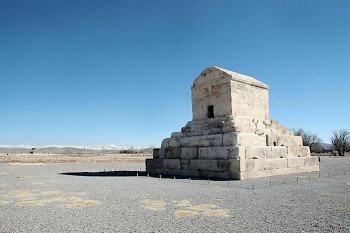
To make the tomb a suitable monument for the festivities, repairs were carried out. However, several stones were put on the wrong place, leaving large gaps that were filled with cement and concrete. Soon, the cement started to fall, creating crevices through which water seeped into the building, causing damage to the ancient monument. Restoration works started in 2003 and continued to October 2008.
At that time, there were reports that the monument was again threatened, this time by an inundation caused by the construction of a dam in the river Sivand. That the monument would suffer, has been officially contradicted by the archaeological authorities.
A similar monument, called Gur-e Dokhtar, is to be seen near Buzpar. This type of tomb may have influenced the so-called "Tomb of Hiram" in Tyre.
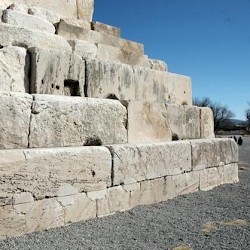 Psargadae, Tomb of Cyrus, Lower rows of stones |
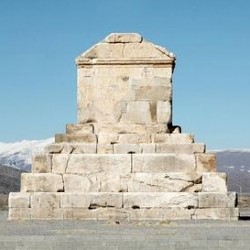 Psargadae, Tomb of Cyrus |
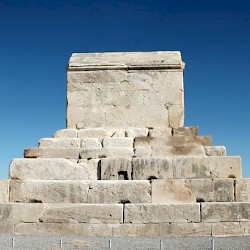 Pasargadae, Tomb of Cyrus |
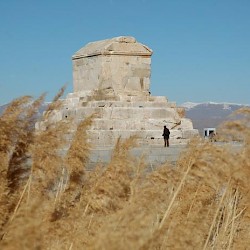 Psargadae, Tomb of Cyrus |